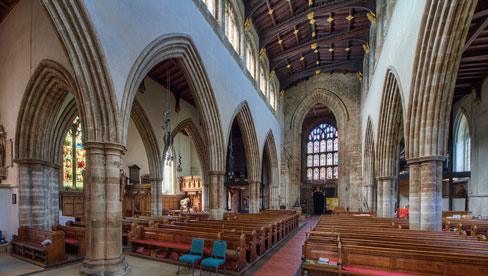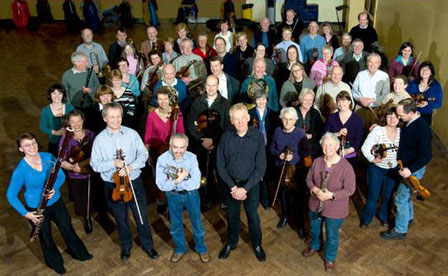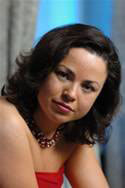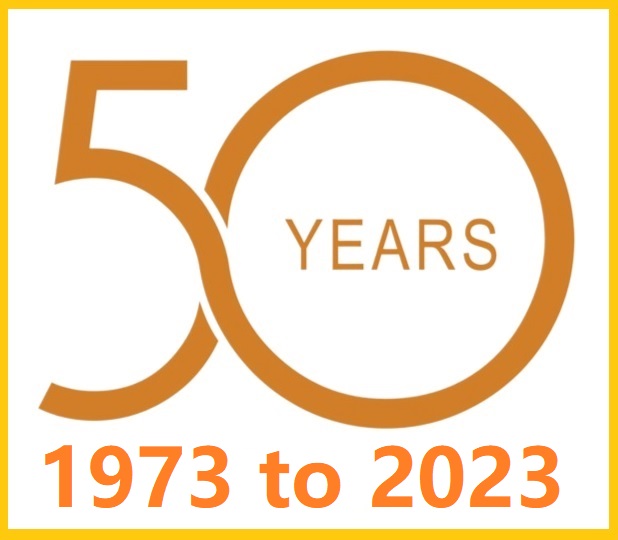Archived Reviews
November 2019 - Emmanuel Church, Loughborough
November 2019 - Emmanuel Church, Loughborough
Charnwood Orchestra Concert Review
At the heart of the Charnwood Orchestra’s recent concert in Emmanuel Church, was Max Bruch’s renowned Violin Concerto. Conductor Nick Fallowfield ensured great balance between soloist and orchestra, which immediately captured the evocative mood, as the soloist began the lyrical opening theme. Soloist Simon Smith seemed effortless in realising both the piece’s gorgeous lyricism, and its virtuosic candezas. A polished performance, in which the strings, often providing the body of the music, played with effective articulation and intonation.
The other two pieces required an expanded orchestra, to great effect. The concert opened with Dvorak’s Scherzo Capriccioso, a well‐written piece, with playful phrases and imaginative key changes ‐ and a masterclass in orchestral colour, with delicate sections throughout, where various instrumentalists flourish. The opening horn call, the resonant harp, the sparkling piccolo, the wonderfully mellow bass clarinet with answering phrases on the flutes, and the haunting cor anglais ‐ many memorable lyrical lines, all played with great feeling and flair.
The concert closed with Prokofiev’s Symphony No.7 ‐ his final symphony. Nic Fallowfield reminded us that this music has proved influential for much film music since ‐ very instructive. Prokofiev died the same day as Stalin, and the challenge in 1952 was to write great music, despite the dangers. Prokofiev succeeded with a lovely work with sweeping tunes, but also the characteristic flickers of witty key changes that mark all his works.
The orchestra ‐ expanded further with piano, xylophone and glockenspiel ‐ executed the atmospheric opening well, then gave us a waltz (more Ravel than Strauss ‐ part impulsive romp, part improvisatory dance). The Andante provided a restful interlude, with fine contributions on the xylophone. And the finale was classic Prokofiev, with brilliant chordal sequences landing unexpectedly back ’home’, and giving something of a circus feel, before a peaceful resolution. Extended applause showed audience appreciation.
Anthony Thacker
September 2019 - Holy Trinity Church, Barrow upon Soar
Charnwood Orchestra Concert Review
The Charnwood Orchestra’s classical concert in Barrow came early this year ‐ on 14 Sept, with a great selection. Making a strong entry with Beethoven’s Coriolan Overture, they well caught the drama of Beethoven in his prime, both lyrical and energetic.
Schubert followed, with two extracts from his suite from Rosamunde, familiar items of the great songsmith, wonderfully lyrical as we would expect, the Entr’acte played with warmth and authority, and the Balletmusik ‐ folksy, charming and fun ‐ played with grace.
Mozart’s most celebrated horn concerto ‐ his fourth ‐ came next. In the first movement, the Charnwood immediately captured Mozart’s inimitable timbre, and provided a fine balance between orchestra and soloist Richard Lewis, who played with a lovely tone, and great subtlety as needed. He was again assured in the middle movement, a Romanza. The final movement, a Rondo, included the famous galloping theme, which the orchestra and soloist pulled off with great fun and zest.
The final item, after the interval, was Haydn’s last but one symphony (no.103), known as ’the Drum Roll’, because of the evocative drum-roll start (also repeated later), given a great interpretation by timpanist Tim Neal. After this distinctive sound, came Haydn’s characteristic slow introduction, preparing us for the strong, positive main theme, played with grace, charm and energy. The second movement, Andante, provided direct variations on folk melodies, including one with virtuosic solo violin, which leader of the Orchestra, John Barwell, played to distinction. The third movement with its contrasting sections in 3/4 time, provided an elegant Menuet and lilting Trio, robustly played. A horn call opened the Finale, followed by a great violin-based theme, a timeless miracle of music, with energy, strength ‐ and yet also with Haydn’s familiar good humour throughout.
Once again the Charnwood Orchestra under conductor Nic Fallowfield provided the audience with a great evening.
Anthony Thacker
June 2019 - St James the Greater, Leicester
Charnwood Orchestra Concert Review
The Charnwood Orchestra gave us a Russian evening for their summer concert in St James the Greater, Leicester, opening with Tchaikovsky’s Fantasy Overture ’Romeo and Juliet. Very Russian in the opening woodwind start, yet universal, following Shakespeare’s romantic tragedy, and glorious to hear this masterpiece in such a wonderful acoustic venue, where the harp resounded with superb clarity, now with pizzicato strings, now with cor anglais. The audience was well treated with such a fine performance of this well-loved piece.
The other two works were twentieth century pieces. First, Kabalevsy’s Violin Concerto, which was new to me, played with great skill by Bulgarian soloist Zhivko Georgiev. An enjoyable piece, well realised, with a delightful flowing start, both lyrical and energetic, and matched by Georgiev’s lovely tone on the violin. He played the slow movement’s moving theme sensitively, both with the tune, and providing roving accompaniment. And the ’lively joyful’ finale was great fun, with its expanded percussion including xylophones, while Georgiev showed mastery of the virtuosic responses in its antiphonal cadenza.
Finally came one of my all-time favourite pieces, Shostakovich’s Symphony No.5. After Stalin personally castigated Shostakovich’s opera, with sinister threats, this was the piece on which his life literally depended, and he somehow succeeded in appealing to party apparatchiks and true musicians alike, gaining a 40-minute ovation at its premier.
With the extensive percussion, including xylophone, glockenspiel, piano, celeste, various drums and gong, Shostakovich oscillates between dramatic passages with the full orchestra and sensitive passages, where soloists shine. The Charnwood Orchestra captured the urgency at the start of the first movement, but also, in the closing solo violin (with celeste) and again in the second movement against harp and cello, Leader of the Orchestra John Barwell played with exquisitely beautiful expression. The Largo was intense with rich, split strings, and contrast with the harp above shimmering strings; and the finale took us on an emotional journey where the issues are all resolved with a musical ray of sunshine.
Anthony Thacker
Saturday 18th November 2017 - Emmanuel Church, Loughborough
Charnwood Orchestra Concert Review
The Charnwood Orchestra performed a concert of late 19th century Russian music on Saturday 18th November at Emmanuel Church to an enthusiastic audience. This was a very popular programme which began with Alexander Borodin’s Price Igor overture, unfinished at his death and completed by Glazunov.
This and the other pieces required a large ensemble and they produced a really good sound with the strings playing well throughout, the flutes beautifully assured and the French horns warm and well balanced. Thereare some lovely melodies in this piece and the conductor, Nic Fallowfield, was in full control of an excellent performance.
Next we were treated to Tchaikovsky’s piano concerto No 1 in B flat minor with soloist Allan Schiller playing the Steinway. To say it was brisk is something of an understatement, but this orchestra is good and they handled the pace well, the result of a lot of practice I suspect. The well-known opening was powerful and precise amid a cascade of notes from the piano, and in the later stages the wind section was clear and confident.
The second movement is popular on the radio and the wind section again played well, with the brass muted and controlled for a softness of touch. Once again the pace was brisk. The final movement was a triumph for the whole orchestra playing on top form with some excellent softer work. The audience loved it and there were three ovations for the pianist and conductor.
After the interval we heard Alexander Glazunov’s Symphony No 5 in B flat minor, although there are at least four key changes during the piece. This is not a well-known work, but it is a good one, and I doubt it has been played locally in many a year, so it was an excellent choice. The powerful opening by the strings gave way to the woodwind taking up the melody and the impressive horns and timpani making a real contribution in an ensemble piece of considerable beauty.
The lively scherzo followed involving the harp and percussion and a lot of pizzicato, all well played. The slow third movement was worth the ticket money on its own, reminiscent of Tchaikovsky with the wind section in fine form and the strings sweeping through the melodies, for me the performance of the evening.
The final movement was so well played with the balance of the sound perfect, the mark of an excellent conductor. The rousing finish was superb with lots of percussion and timpani and huge chords to end the piece. The audience clearly appreciated the whole concert with warm applause all round.
The orchestra’s next concert, entitled Vienna and Beyond, is on 13th January at Humphrey Perkins Community Centre in Barrow upon Soar.
John Lamb
Saturday 23rd September 2017 - Holy Trinity Church, Barrow upon Soar
Charnwood Orchestra Concert Review
The Charnwood Orchestra performed a most interesting concert last Saturday 23rd September at Holy Trinity Church in Barrow. The programme featured some familiar pieces and some that are rarely heard. The opening Symphony in D by CPE Bach is a really challenging piece for any ensemble, frenetic in places and with some unusual features, but the strings coped well while the oboes brought a warm tone. The bridge into the second movement gave the bassoons and flutes a chance to shine, while the cellos and flutes played really well in the largo. The joyful finale is repeatedly interrupted by a seven note winding question from the strings which they handled well, receiving warm applause from the audience.
The highlight of the evening came next with guest soloist, Timothy Taylorson, featuring in Mozart’s Flute Concerto No. 1 in D. It is rare to hear a flute concerto performed, partly because the repertoire is not large, with many major composers writing nothing for the instrument and several of the pieces coming only through commissions. This commission for Ferdinand Dejean, a doctor and amateur flautist, was rushed through while Mozart was distracted by his enthralment with Aloysia Weber, and yet it remains a wonderful piece of music. The entire orchestra played superbly throughout while the soloist was a joy to hear, particularly in the cadenzas in the first two movements. The conductor, Nic Fallowfield, was in total control, the horns were on top form and the orchestra were just having fun with an outstanding performance.
A couple of extracts from Gluck’s opera Orpheus and Eurydice opened the second half and the orchestra played the harmonies well with the flutes carrying the melodies beautifully. The final piece of the evening was Schubert’s familiar and hugely popular Symphony No. 5 in B flat major. This is almost half an hour of the most wonderful music which the conductor led without a score and with complete assurance. In the opening movement the first violins carried the melodies well, with the cellos and bass supporting powerfully and the woodwind clear and confident, while in the andante the horns and bassoons brought a lovely deep tone. The third movement had some great changes of pace, while the final movement was played faster than any recording I have ever heard, but with good accuracy and enthusiasm. The large audience applauded warmly, several of them having brought cushions. Without one, I had forgotten how church pews can sometimes be as hard and unforgiving as a music critic.
Nic Fallowfield has been the orchestra’s conductor for almost twenty years and is clearly not only very able but also hugely popular with the ensemble, selecting a mixture of popular and challenging pieces. Their next concert on 17th November is at Emmanuel Church where no cushions are required. Details may be found on the orchestra’s website.
John Lamb
Saturday 19th November 2016 - Emmanuel Church, Loughborough
Charnwood Orchestra Concert Review
An enthusiastic audience at Emmanuel Church enjoyed an evening of Scandinavian music played by the Charnwood Orchestra under the baton of Nic Fallowfield. This orchestra produced a warm sound on a cold evening and began with the Norwegian Rhapsody No. 3 by Johan Svendsen, a contemporary of Edvard Grieg. The piece consists of three movements played without a break giving opportunities to all sections of the orchestra. The opening allegro in waltz time brought the excellent oboes, bassoons and flutes to the fore carrying the melody over the sweeping strings. As they moved into the andante, the French horns picked up the lead to be joined by the flutes and clarinets over a cello pizzicato, finishing with the full orchestra giving us a powerful display. The closing allegro was beautifully played with the second violins setting the pace, finishing with a strong performance by the lone timpani who let us know that he meant business.
The concert pianist Robert Markham then joined the orchestra to play the ever popular piano concerto in A minor by Grieg. The opening allegro was played at some pace with all the strings playing well and lovely warmth coming from the excellent cellos. Markham clearly enjoyed playing the Steinway and was note perfect, inspiring the entire ensemble to play with great passion and confidence. He played the adagio with an assured touch while the strings again created a mellow sound using their vibrato to great effect. Almost without a pause they moved into the final allegro, and you could tell that the whole orchestra were really enjoying themselves as the A minor key moved to major for a finish that was as good as you will hear from an amateur orchestra. The audience applauded loudly and the soloist looked relieved.
After the break we heard Symphony No. 5 by Jean Sibelius. This is not an easy piece to play but this orchestra had the confidence to take it on because they were so well led by their conductor. The brass and woodwind led us, perhaps a little quickly, into the opening movement and then the strings took over before the bassoons gave us a wonderfully haunting section. The movement closed with a strong performance by the brass and a tightly played finish. The second movement has a lot of pizzicato for all the strings and this was handled well, particularly in getting the balance right between the different sections of the orchestra. Once again the warmth of their sound came over well in this quite perfect venue. The final movement returns to E flat major key and needs a good conductor to manage the opposing rhythms. It also needs a huge brass sound usually found only in a big orchestra, but the Charnwood Orchestra made it their own and in splendid fashion. As the movement closed with its six enormous chords the timpani player made absolutely sure that we all knew he was there. Great playing and a really enjoyable evening for everyone !
John Lamb
17th March 2012
All Saints Parish Church, Loughborough
An Evening with Charnwood Orchestra

Cello soloist Deirdre Bencsik [who played Kabalevsky's 1st Cello Concerto in G Minor] is quick to compliment the orchestra, and comments on their clear enthusiasm for music. This passion is evident in the faces of the musicians; in the man whose smile falters only when he sets down his violin, in the woman whose eyes twinkle towards her music.
Sibelius' Symphony in E Minor demonstrated several outstanding clarinet solos by Suzanne Thompson and by the end of the fourth movement the orchestra was reduced to a seething mass of strings, each bow working at lightning speed yet entirely in unison, creating a rippling wave of movement. An impressive performance was also given by conductor, Nic Fallowfield, who allowed the orchestra to play without interfering with the audience' focus.
Khachaturian's Masquerade Suite proved itself to be more familiar to the audience than they appeared to have expected and the initial reaction was that of a wonderful surprise. During the several dance pieces, particularly the final gallop, it was not uncommon to see the audience bobbing along to the upbeat tempo, not bothering to conceal a grin as they did so.
All in all, I can only conclude that Charnwood Orchestra have put on a bold and adventurous programme and more importantly, a great night out.
- Genevieve
19th March 2011
All Saints Parish Church, Loughborough
Night of lively, stimulating sounds
Tchaikovsky’s Fantasy Overture to Romeo and Juliet conveys many different moods. The music itself, of course, imparts much of this through tempo, harmony and volume, but any music must be interpreted to bring it to it's full potential. The Charnwood Orchestra produced a subtle and clear interpretation, which was pleasant to listen to, with a wonderfully dramatic depiction of the feud between the Montagues and Capulets. I enjoyed the clarity of the harp, which punctuated the music like the moon through a clear night.
[In] Glazunov’s Violin Concerto... soloist Gina McCormack gave a simply beautiful performance, well supported by the orchestra, including a wonderful cadenza which danced toward the final movement; orchestra and soloist bringing the piece to a close in an uplifting performance.
Conductor Nic Fallowfield produced a concert full of lively and expressive performance at All Saints parish church, in which each section of the orchestra could be clearly heard and yet blended to form a cohesive whole. A concert which was full of stimulating sound.
- Peter Collett - Leicester Mercury

15th January 2011
Humphrey Perkins School, Barrow
More Magic of Vienna
An evening of music entited More Magic of Vienna sounds predictable - Johann Strauss, Strauss and more Strauss?
Not so, the Charnwood Orchestra's concert began with the overture to The Merry Wives of Windsor - an opera by Otto Nicolai, based on Shakespeare's play [followed by] polkas, some like Tritsch-Tratsch and Thunder & Lightning that I knew well - but others that I'd never heard.
Of course, there were a lot of Strauss waltzes; Roses from the South, Wine, Women & Song and Vienna Blood [and] the Barcarolle from the opera The Tales of Hoffmann, by Jacques Offenbach - one of the gentlest pieces of music ever written.
At one point conductor Nic Fallowfield dropped his baton. I picked it up and took over from him for a couple of minutes - a new experience! The orchestra didn't go wrong once. Obviously I have a talent for conducting!
The evening almost ended with the world's most famous dance: Johann Strauss's Blue Danube waltz but of course it really did end with the Radetzky March, written by Johann Strauss I, father of the Blue Danube composer. This is a piece which lends itself to audience participation in the form of lots of hand clapping - and the Humphrey Perkins audience were not slow on the uptake.
This was an evening to persuade people that so-called classical music is not a serious, solemn business and it was indeed a fun evening.
- Terry Larkin - Loughborough Echo

20th November 2010
Emmanuel Church, Loughborough
The noble and serene qualities needed for peace
Variations on the St Antoni Chorale by Johannes Brahms... is one of the most noble and serene pieces of music ever written, and the orchestra, conducted by Neil Aston, fully endowed it with those qualities.
[The] Enigma Variations, by Edward Elgar... has great power, fully brought out by the Charnwood Orchestra, aided by the excellent acoustics of Emmanuel Church - not a building designed with music-making in mind.
- Terry Larkin
2nd October 2010
Holy Trinity Church, Barrow-on-Soar
Guest conductor Dan Rosina seemed particularly good at interpreting the mood and style changes in the music.
It is pleasing to report that the church was very full and the audience were able to enjoy a choice of wine or beer during the interval.
- Roger Swann
16th January 2010
Humphrey Perkins School, Barrow
Infectious Viennese tunes by Charnwood Orchestra
The Orchestra's Viennese evening, The Magic of Vienna, was a sell-out, attracting a wide range of ages, but it raised a question - how do people today discover the waltzes and polkas of the Strauss family of Vienna, so familiar to those who grew up with the old wireless for home entertainment? Radio 2 perhaps? Friday Night is still Music Night, I see. Classic FM maybe. Some of the audience at Humphrey Perkins School were surely hearing this music for the first time. But they must have been impressed by the infectious tunes and playing, helped along by conductor Nic Fallowfield's introductions.
...Fallowfield got the audience to sing or shout as required in a couple of unfamiliar pieces, but almost every famous Strauss piece was there, beginning with the overture to Die Fledermaus, and ending with the Radetzky March, everyone clapping along in traditional style.
The Tritsch-Tratsch Polka sparkled but ultimately the prizes went to the grand favourites, the Emperor Waltz, Voices of Spring and The Blue Danube: The horns wonderfully led into that tribute to Vienna's great river, blue or not, and the playing came close to a genuine Viennese style.
- A.F.
21st November 2009
Emmanuel Church, Loughborough
Katya piece was on a different plane
Some fortunate circumstance must lie behind the appearance of the outstanding pianist Katya Apekisheva with the Charnwood Orchestra in Emmanuel Church. Networking by their conductor Nic Fallowfield, perhaps.

The opening piece, Beethoven's heroic Egmont Overture, was stirringly done, but the performance with Apekisheva of the Emperor Concerto was on a different plane. It had you listening to it as if for the first time. Here was no run-through or self-indulgent barnstorming, but an interpretation of authority and refinement, alternately powerful, delicate and reflective. No wonder the full audience was deeply hushed after the first movement, so that the hymn-like adagio followed with profound effect.
And as if the orchestra had not already been inspired, now the strings quietly excelled themselves. The intensity may have relaxed in the finale, but it still rang true. To quote the prestigious magazine Gramophone, Katya Apekisheva is 'a profoundly gifted artist' who has 'already achieved artistic greatness'. It was a privilege to hear her again.
- A.F.
10th October 2009
Holy Trinity Church, Barrow-upon-Soar
Superb celebration of Haydn bicentenary
Haydn's Violin Concerto No. 1 with Nic Fallowfield as soloist/conductor was nothing if not robust in the outer movements. The adagio was in beautiful contrast, the string band's gentle pizzicato accompanying his finely spun solo, even if it was not always spot on. Haydn's good humour broke out in the finale.
The acoustics were just right for Haydn's Drum Roll Symphony, No. 103, which found the orchestra in top form. The first movement was skilfully handled, its cheerful allegro so strikingly contrasted with the sombre opening adagio, surprisingly repeated later. The andante variations were done with great delicacy, the minuet stomped around the ballroom, and it was all brought to a vivid conclusion.
How inspired is the way the finale's little horn call releases the movement's theme like a call-sign. Here was a superb celebration of Haydn's bicentenary.
- A.F.

